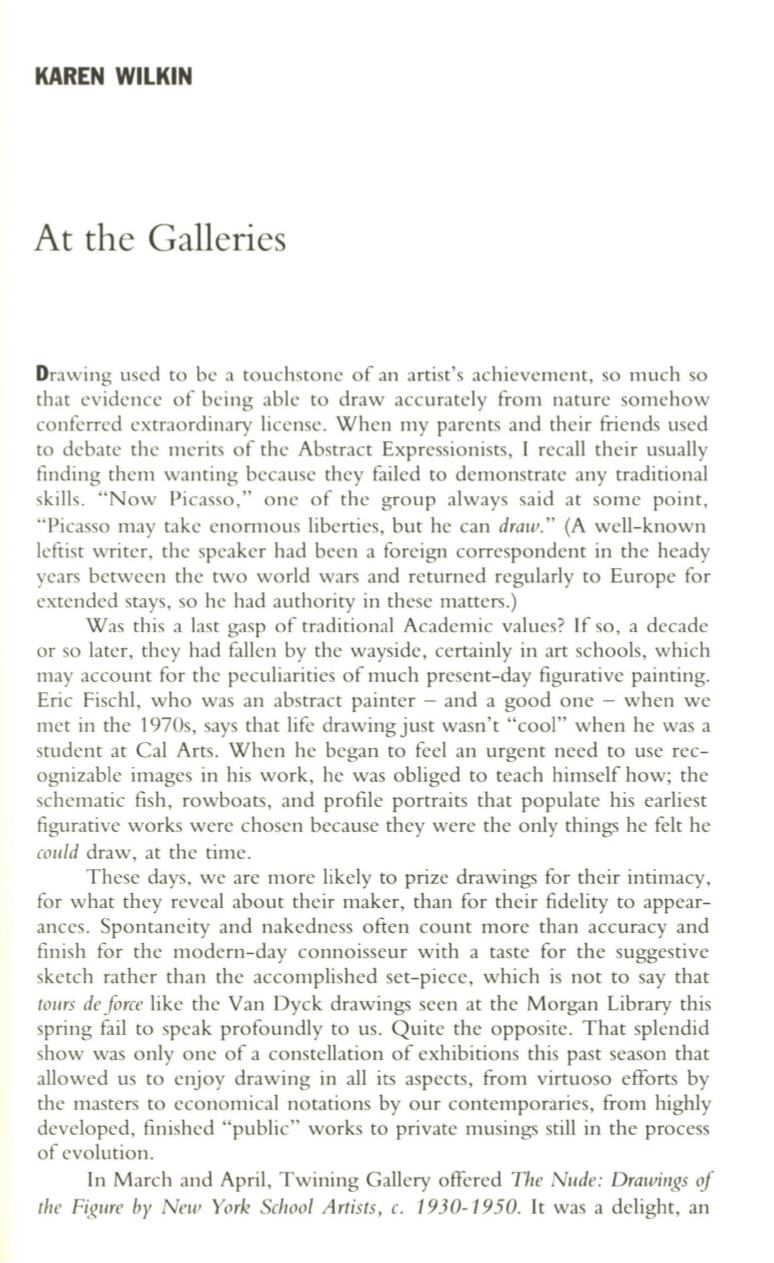
KAREN WILKIN
At the Galleries
Drawing used to be a touchstone of an artist's achievement, so much so
that evidence of being able to draw accurately from nature somehow
conferred extraordinary license. When my parents and their friends used
to debate the merits of the Abstract Expressionists, I recall their usually
finding them wanting because they failed to demonstrate any traditional
skills. "Now Picasso," one of the group always said at some point,
"Picasso may take enormous liberties, but he can
draw."
(A well-known
leftist writer, the speaker had been a foreign correspondent in the heady
years between the two world wars and returned regularly to Europe for
extended stays, so he had authority in these matters.)
Was this a last gasp of traditional Academic values? If so, a decade
or so later, they had fallen by the wayside, certainly in art schools, which
may account for the peculiarities of much present-day figurative painting.
Eric Fischl, who was an abstract painter - and a good one - when we
met in the 1970s, says that life drawing just wasn't "cool" when he was a
student at Cal Arts. When he began to feel an urgent need to use rec–
ognizable images in his work, he was obliged to teach himself how; the
schematic fish, rowboats, and profile portraits that populate his earliest
figurative works were chosen because they were the only things he felt he
cOllld
draw, at the time.
These days, we are more likely to prize drawings for their intimacy,
for what they reveal about their maker, than for their fidelity to appear–
ances. Spontaneity and nakedness often count more than accuracy and
finish for the modern-day connoisseur with a taste for the suggestive
sketch rather than the accomp lished set-p iece, which is not to say that
tOllrs de Jorce
like the Van Dyck drawings seen at the Morgan Library this
spring fail to speak profoundly to us. Quite the opposite. That splendid
show was only one of a constellation of exhibitions this past season that
allowed us to enjoy drawing in all its aspects, from virtuoso efforts by
the masters to economical notations by our contemporaries, from highly
developed, finished "public" works to private musings sti ll in the process
of evolution.
In March and April, Twining Gallery offered
The Nude: Drawings oj
the Figure
by
New York School Artists, c. 1930-1950.
It was a delight, an


